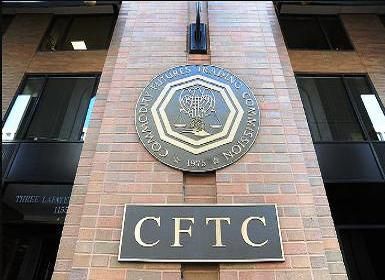An upcoming US regulatory deadline is distressing swaps users as execution platforms say they will not be able to offer transactions pairing interest rate swaps with certain other derivatives following the cut-off.
Following a roll-off of regulatory relief on November 15, traders hoping to package US Treasury futures, corporate bonds, credit options, mortgage-backed securities, interest rate options, and equity total return swaps with a comparable or offsetting vanilla interest rate swap will likely find themselves with no place to trade.
“Right now it’s an absolute mess, no one is ready to move online and under SEF rules,” said one hedge fund executive. “Hedging becomes a lot more difficult without the ability to package these exposures together, so we hope to get some relief until the operational problems can be solved.”
Swap execution facilities say they are working to build out functionality to allow such “packaged transactions” to continue to trade as normal following the relief expiry, but in many cases this will not be ready until next year at the earliest.
Industry groups ISDA and the Managed Funds Association have both submitted requests for the CFTC to extend no-action relief beyond November 15.
“In the absence of relief requested in this letter, we are very concerned that November 15 package transactions will become largely unavailable as an investment or risk management tool to a significant number of market participants,” wrote Stuart Kaswell, general counsel at the MFA, in a letter dated October 15.
Both industry groups asked for requirements for most packages to be held off until February 15. But ISDA also asked that swap packages with MBS be given until May 15 and that Treasury futures packages and new corporate bond issuance packages be eliminated from SEF requirements altogether.
A carve-out for Treasury futures packages from SEF requirements is the most dramatic of the requests, as they represent a decent chunk of swaps activity. Invoice spreads, where Treasury futures are combined with swaps, represented an estimated 3% of overall IRS volumes in August, according to Tod Skarecky, vice-president at ClarusFT. Other market participants estimate the market is larger, perhaps up to 10% to 20% of overall IRS volume.
Previous relief expiries
The CFTC gave relief from Dodd-Frank SEF execution requirements to all packaged transactions when mandatory SEF trading first went live last February to give participants more time to digest the rules and come up with solutions.
The agency staggered expiry dates for different types of packages, with the upcoming November 15 expiry representing the last roll-off date.
The expiry of each relief represents a key cog in migrating swaps volumes on to SEF platforms.The previous expiry in June – which forced participants pairing over-the-counter IRS with US Treasury bonds to trade pursuant to SEF rules – spurred heavy volume increases at trading platform Tradeweb.
The firm saw IRS volumes jump from US$193bn notional in May to US$284bn in June after the package roll-off. The firm executed US$399bn in September.
Size estimates for the packaged markets designed for passage on to SEFs on November 15 are hard to come by, but market participants say volumes are significant and could help sort out winners and losers in the oversaturated SEF market.
SEF plans
For their part, SEFs are looking to contend with complex operational and legal issues around transitioning packaged trades into the new environment. Many have been working on the planned migration for months, but few, if any, solutions are expected to be completely ready by the deadline.
MarketAxess, a credit execution platform, hopes to roll out capabilities for packaging credit options with credit default swaps in early 2015. TrueEx, a start-up rates platform, hopes to have a solution for rates options against interest rate swaps by the end of this year.
Tradeweb says it will have a solution ready for MBS packages by November 15, but it will likely take several weeks for market participants to link in to the system to trade on a truly automated basis.
As such the first transactions are likely to be manually executed, according to Chris Amen, head of US institutional rates markets at Tradeweb.
CME is rumoured to be rolling out a solution for invoice spreads, where Treasury futures are paired with swaps, but has yet to announce a planned launch date.
Decoupling risk
If the CFTC does not come out with further relief and platforms are unable to provide solutions in time, traders would be forced to decouple packaged transactions. Doing so would reduce the effectiveness of previously employed hedging strategies and could force traders to find a new way to hedge, participants say.
That, or traders may try to transact the two legs of the trade on different platforms at the same time and hope they are able to strike while prices and exposures match up.
The risk of mismatched exposures or the market moving against a trader while operating across two platforms – known as “legging risk” – is perceived to be material. Previously, one leg of the trade could be bilaterally negotiated and matched to the corresponding contract.
“Forcing investors to decouple these types of trades could actually increase risk – even though that is the opposite of the CFTC’s intentions,” said one interdealer broker SEF executive.
“I’m not sure how, if at all, swaps users will look to pair their swaps with these other derivatives, which brings into question how well-hedged people will be.”
